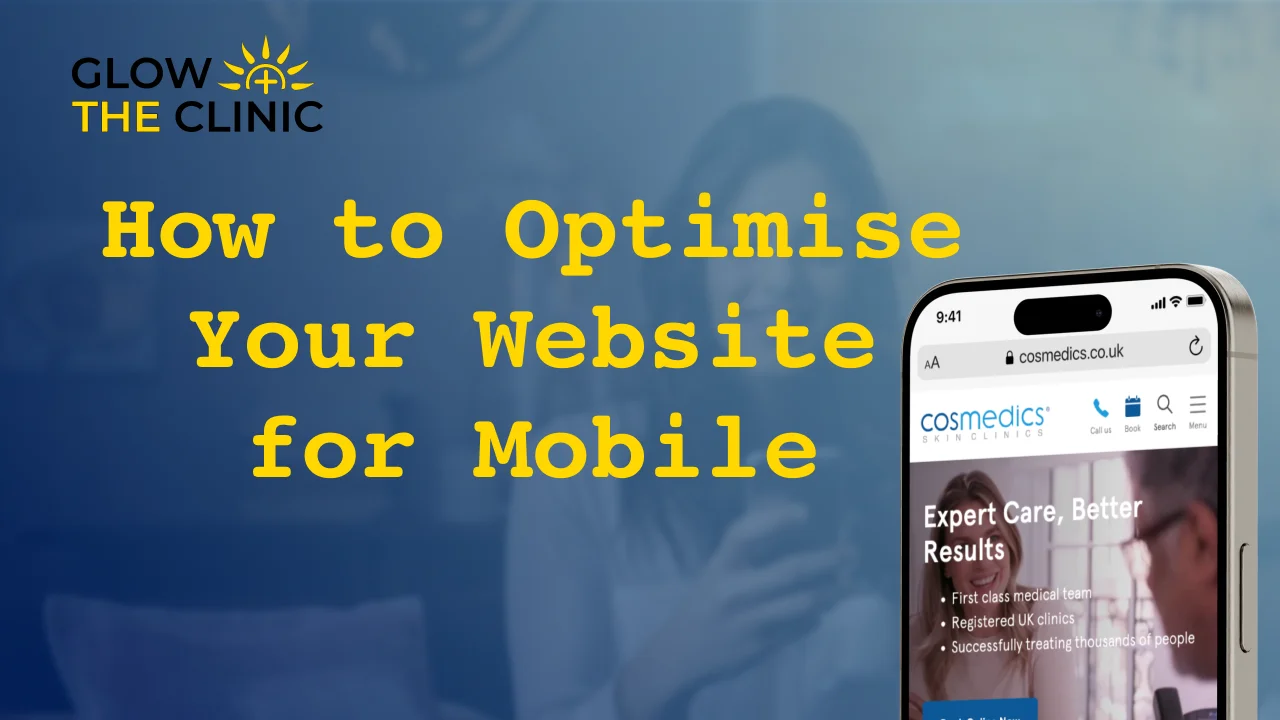
How to Optimize Your Website for Mobile?
In today’s digital age, more people are using their smartphones and tablets to search for information than ever before. For healthcare providers, this means that having a mobile-friendly website is not just a luxury—it’s a necessity. A mobile-optimized website enhances patient engagement, boosts your clinic's credibility, and improves your search engine rankings. In this blog, we will explore why mobile optimization is crucial for healthcare websites and provide actionable tips on how to optimize your website for mobile.
The Importance of Mobile-Friendly Websites in Healthcare
The number of mobile internet users has skyrocketed in recent years. With over half of all internet traffic now coming from mobile devices, healthcare providers must ensure their websites are accessible and user-friendly on all screen sizes. Here’s why mobile optimization is vital for your clinic:
Improved Patient Engagement:
A mobile-optimized website allows patients to easily navigate your site, find the information they need, and contact your clinic without frustration. This ease of use can significantly improve patient satisfaction and engagement.Higher Search Engine Rankings:
Google’s mobile-first indexing means that the mobile version of your website is considered the primary version. If your website isn’t mobile-friendly, it could negatively impact your search engine rankings, making it harder for potential patients to find you.Increased Trust and Credibility:
Patients expect a seamless experience when browsing healthcare websites. A site that is not optimized for mobile can appear outdated or unprofessional, potentially driving patients to seek care elsewhere.
How to Optimize Your Website for Mobile
Now that we’ve covered why mobile optimization is crucial for healthcare websites, let’s dive into how to achieve it:
Responsive Design
A responsive design ensures your website looks and functions well on all devices, whether it’s a smartphone, tablet, or desktop. This is achieved by using flexible grids and layouts, images, and CSS media queries to adjust the site’s design based on the screen size.
How to Implement Responsive Design:
Use a Mobile-First Approach:
Start by designing your website for mobile devices first, then scale up for larger screens. This ensures a clean, user-friendly mobile experience.Test Across Devices:
Use tools like Google’s Mobile-Friendly Test to check how your website performs on various devices and make adjustments as needed.
Optimize Loading Speed
A slow-loading website can frustrate users and lead to higher bounce rates, especially on mobile devices where users expect quick results. In healthcare, where timely access to information is crucial, a fast-loading site is essential.
How to Optimize Loading Speed:
Compress Images:
Large images can slow down your website. Use tools like TinyPNG or ImageOptim to compress images without compromising quality.Minimize Code:
Remove unnecessary code, including whitespace and comments, to reduce page size and speed up load times. Tools like HTML Minifier and CSS Nano can help with this.Leverage Browser Caching:
Caching allows your website to store data on a visitor’s device, reducing the need to reload the entire page every time they visit.
Ensure Easy Navigation
Mobile users need to be able to navigate your website with ease. If your site is difficult to navigate, users may leave and not return.
How to Ensure Easy Navigation:
Use Clear, Clickable Buttons:
Make sure buttons are large enough to be easily tapped on mobile devices and clearly labeled to guide users.Simplify Menus:
Use a simple, collapsible menu (often called a "hamburger" menu) to keep your site organized and easy to navigate.Prioritize Important Information:
Make sure the most important information, like contact details, appointment scheduling, and services, is easy to find and access.
Enhance Readability
Text that is difficult to read on a mobile device can frustrate users and lead to a poor experience.
How to Enhance Readability:
Use Legible Fonts:
Choose fonts that are easy to read on small screens and ensure the font size is large enough for comfortable reading.Utilize White Space:
Adequate white space helps make your content more digestible and visually appealing on mobile devices.Avoid Pop-Ups:
Pop-ups can be particularly annoying on mobile devices, often obstructing the view of the page. If you must use them, ensure they are easy to close.
Test Your Website Regularly
Regular testing is crucial to ensure your website remains mobile-friendly. As new devices are released and web standards evolve, regular testing helps you keep your site up-to-date and functioning optimally.
How to Test Your Website:
Use Mobile Testing Tools:
Tools like BrowserStack or Google’s Mobile-Friendly Test can help you see how your website performs on various devices and screen sizes.Gather User Feedback:
Ask patients or colleagues to use your website on their mobile devices and provide feedback on their experience. This can provide valuable insights into any areas that may need improvement.
Conclusion
Optimizing your website for mobile is no longer optional; it's essential for any healthcare provider looking to improve patient engagement and stay competitive. By implementing responsive design, optimizing loading speed, ensuring easy navigation, enhancing readability, and regularly testing your site, you can create a mobile-friendly website that meets the needs of today’s patients.
At Glow The Clinic, we specialize in building blazing fast, patient-centric websites that are optimized for all devices. If you’re ready to take your clinic’s online presence to the next level, contact us today to learn more about how we can help you optimize your website for mobile.
For more information on how Glow The Clinic can help you build a high-performing, compliant website, contact us today!
